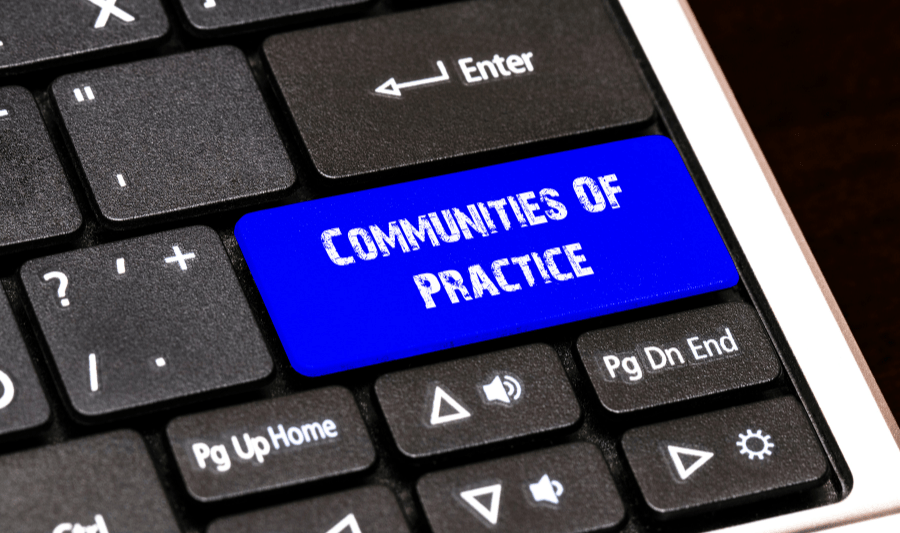
by Lisa | Jun 15, 2021 | Business, Community, Education, Event Planning, Facilitation, Leadership, Productivity
Do you need to create an avenue for people to interact, pool resources, and work in partnership within your industry? Does your organization need to improve its professional development and problem-solving capabilities? Then, a Community of Practice might be the solution to these challenges.
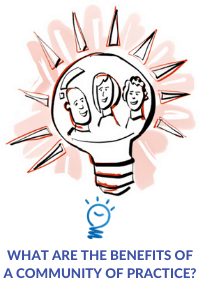
Are you struggling with a lack of professional development or problem-solving skills within your organization? Or maybe there is little to no cohesiveness and interaction among key professionals within your industry?
If so, a community of Practice (CoP) just might be what you need to consider as an effective solution for these challenges.
What is a Community of Practice?
A Community of Practice is best defined as a group of people who share common interests or concerns, i.e., they take part in ongoing interactions with objectives focusing on a set of problems, a specific industry, or a discipline.
Why create a Community of Practice?
Although CoPs were first developed to facilitate the exchange of information and knowledge, they have evolved to be more than that. A CoP provides an environment where professionals can share best practices and generate new answers, theories and learning.
CoPs are now used as an effective tool to improve clinical and public health practices. But they are not only useful in the health industry. They are also helpful in several industries, including business, child welfare, and education.
So, what are the purposes of a Community of Practice?
- To promote the standardization of practices for professionals.
- To initiate and manage a body of knowledge for members to draw on.
- To innovate and create new ideas, knowledge and practices.
The Benefits of a Community of Practice
Increased Collaboration
A Community of Practice (CoP) connects people and creates an avenue for people to interact, pool resources, and work in partnership. By organizing collaboration, a variety of people get to work and interact with each other. Without a CoP, these relationships may not have occurred otherwise.
Exchange of Information and Knowledge
A CoP provides the context for people to communicate, share information and knowledge. It does this by creating an avenue for people to interact and share insights and stories improving awareness and comprehension around a body of thought.
Innovate and create new ideas/knowledge
A Community of Practice (CoP) allows people to share experiences and create new ideas/knowledge. These valuable interactions generate learning pathways and develop new concepts and innovations.
Professional Development
CoPs encourage peer learning groups, educational workshops, and learning communities which helps professional development. This also helps to increase productivity and performance.
Rapid Problem-Solving
Communities of Practices provide a centralized place for communication and valuable information for solving organizational problems. CoPs foster expertise and rapid problem-solving skills within people.
Conclusion
A Community of Practices can be an excellent strategy for building a more open organization. It is also an effective way to get advanced solutions to complex problems.
Communities of practice foster learning by connecting people and encouraging collaboration. This, in turn, creates a platform for creative problem-solving and innovation.
Do you need help creating and facilitating your Community of Practice? Reach out to us at See in Colors for meeting design & facilitation.
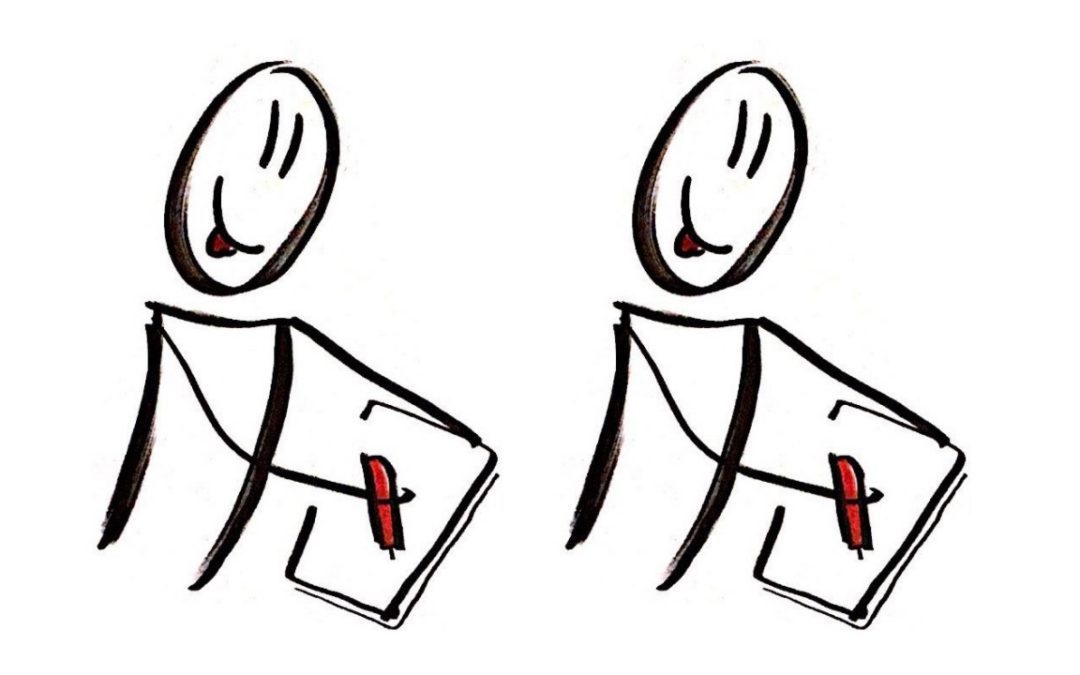
by Lisa | Nov 6, 2019 | Education, Facilitation, Graphic Recording
Creating engaging ways to connect with your coworkers, team members, investors, etc. is crucial to being able to get your message across and get them to understand the point you are making. In this post, we are going to break down the importance of visual thinking and elements within your presentations for your business and everyday activity into the workplace!

Make your presentation stand out
Forget the days of black text on a white background. Been there, done that. Adding images into the mix allows people to engage with the material shared. Looking at a screen with just text is dull and certainly doesn’t spark creativity.
Encourages participation
If you are creating a presentation that includes feedback and discussion, make it time well spent with visual elements to get people talking. Using visuals takes your presentation to a more relaxed and comfortable set up as well. Don’t let your material be stiff and stale.
Focus on the important stuff
Getting a presentation together can be intimidating and overwhelming, especially if you aren’t a fan of public speaking. Use visual thinking and graphic recording elements to take some of the pressure off of composing the right words for the slides, but let the images do the talking for you.
Let visual thinking ignite action
Visual thinking gets the gears turning for your team and leads to motivation for putting those thoughts into action. If you have a more significant project or company goal, let visual thinking get your team ready to take it on and get things done efficiently with high spirits.
Think about it! What could visual thinking do not just for you, but also your team? While we covered these techniques for a presentation and group setting, all of these ideas could also work on an individual level. Want to learn more about visual thinking and graphic recording? Visit our website!

by Lisa | Oct 9, 2019 | Education, Facilitation
With every new presentation or lesson to share with your team, company, whoever – more distractions could hinder them from genuinely gaining something from your materials. From cell phones to pinging computers, you need to really engage with your audience at all times, especially when you are sharing information virtually.

While your audience may be closely paying attention to you, that secondary tab opened on their web browser may say otherwise! We have tips to share to keep your learners intrigued by your information!
- Add sketchnotes to your presentation. As you go from slide to slide, use your sketchnotes throughout the pages to share as you go along. You can import a scan of your sketchnotes or directly upload a photo to your presentation deck.
- Draw some sketches ahead of time. You can draw images before you log on and start the presentation on the back of index cards. Turn your webcam on and show note cards to introduce new sections of the training. This aspect of your presentation is unexpected and will surely keep your audience hooked in, and on the lookout for the next card, you will share!
- Use the polling feature of your software to ask questions and get participation. Ask your members to comment in the chat or select an option on their screen. This will allow them to contribute to the material but also ensure that they are paying attention. Strategically place these types of prompts during certain parts of your presentation to keep everyone engaged.
Try out these ideas in your next presentation! The index card idea is my personal favorite and is a simple one to utilize for sure! Use technology to your advantage to enhance your audience’s experience with your work and allow them to retain the materials easier as well!

by Lisa | Aug 14, 2019 | Business, Community, Education, Event Planning, Graphic Recording
Everyone loves the chance to get away. A chance to get out of the office and have a change of scenery! Your work environment could be the best out there – full of great co-workers and a fully stocked snack pantry, but I bet that any one of your coworkers would love an opportunity to get out from behind their desk and check out a new place.

When planning a staff retreat for your team there are so many options to consider, but all exciting things for sure! You may want to keep things more relaxed or keep things structured – either way being strategic about your agenda is key.
Use your staff retreat as a chance to show your team how much you appreciate all of their hard work. Recognize some key players, but acknowledge the team as a whole during your time together. Present certificates, awards, or gift cards to recognize behaviors and performance. Let them know how important they are to your company’s success. They will love the gesture, and it will increase team morale as well!
Another item to add to your agenda is a period of reflection of the past year. Create a safe space for each team member to be heard and allow your group to connect at a deeper level. Give each person time to share their thoughts.
To compile the discussion together – hire a graphic recorder to visualize and capture the input, ideas, and key points. Visual summaries tell a story and bring emotion to your meeting by incorporating colorful images to the activities. One of our clients recently held a staff retreat and shared with their team, “Your ideas are important to us, we want to hear you, that’s why we hired See In Colors to draw out what’s being said.” Let your team know you want to understand their point of view and allow each opinion to be valued.
Want to add graphic recording to your staff retreat? Learn more about our services here!
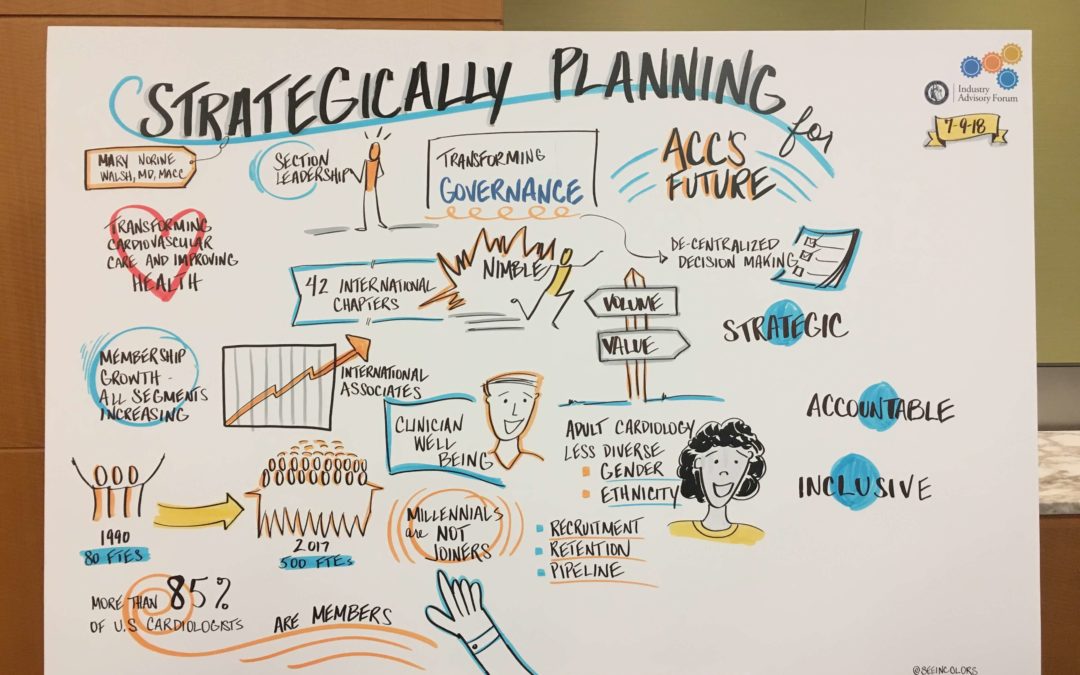
by Lisa | Jul 3, 2019 | Business, Education
Graphic recording (also known as sketchnotes) can be leveraged by all industries. From education institutions to nonprofits, all types of organizations can benefit from visual communication. In this post, we are going to share more about how a specific industry is utilizing graphic recording – healthcare. Check out some examples below from our clients!
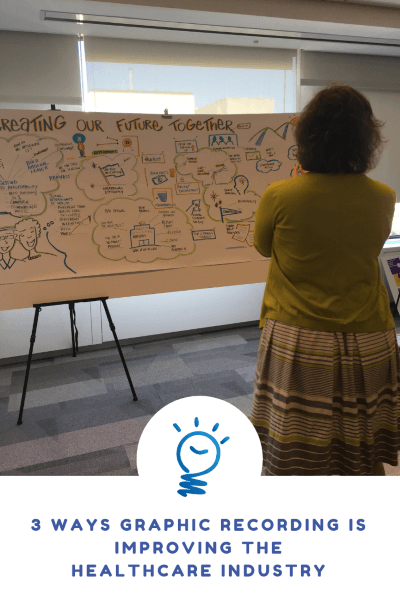
ACC’s Industry Advisory Forum
In this particular example, the American College of Cardiology used our visual summaries for their Industry Advisory Forum and their magazine. From membership statistics to governance, graphic recording was used to draw out the discussion at the meeting. We love their focus on learning,education and being inclusive.
AMCP Partnership Forum
One of the powers of visual communication is the ability to re-purpose and reuse. I had the pleasure of creating a visual summary real-time during their meeting. By re-purposing the digital image in their newsletter, the Academy of Managed Care Pharmacy was able to share their information to a broader audience. They covered industry updates and took time to examine “ways to best utilize and integrate medical and pharmacy data to improve health outcomes and lower costs.”
National Heart, Lung, and Blood Institute
The NHLBI gathered a group of organizations, whose mission is to conquer sickle cell disease. They shared stories of their experience with the disease and came together to collaborate on a new effort called “Cure Sickle Cell Initiative”. Through our graphic recording, the group discovered their intended audiences, high priority messages and covered who to partner with to spread the word even more. They wrapped up the session sharing their emotions and optimism about the day. NHLBI then re-purposed the images in a letter from the Director posted on their website. What a wonderful way to show the ideas and voices of the participants!
These are just a few examples of how healthcare professionals are using graphic recording. This innovative visual practice can be used in your organization. Contact us today to learn more, click here!
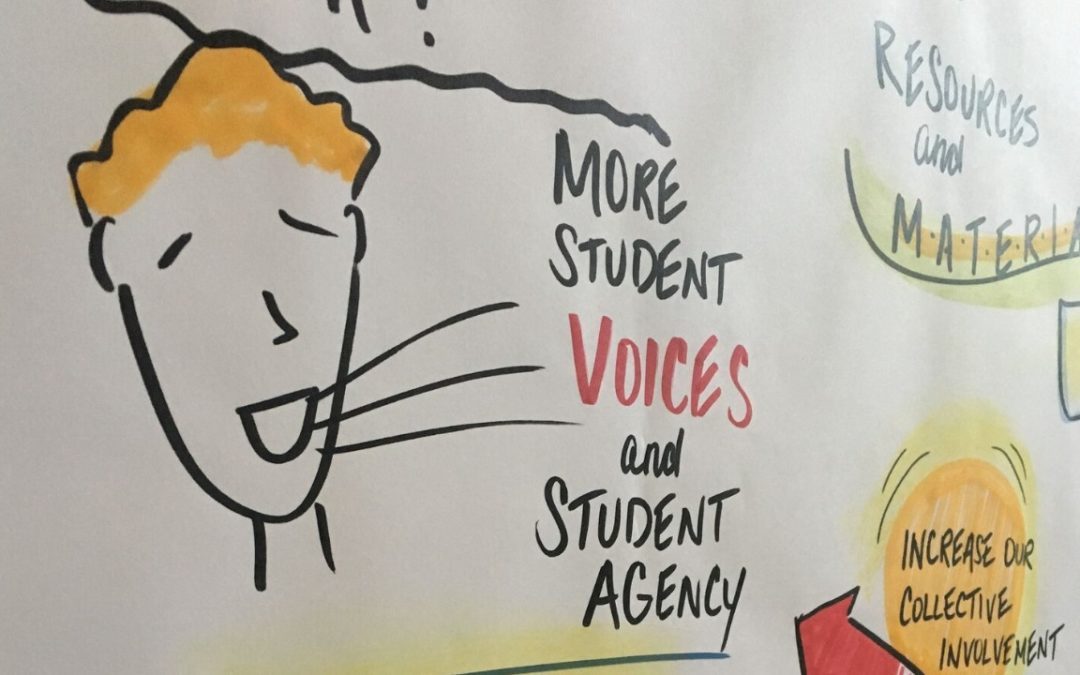
by Lisa | Feb 20, 2019 | Education
Keeping your students engaged in the classroom all year long can be a challenge. The first few weeks of a semester, everyone is settling in and getting the swing of thing. After a few months in, participation and grades can drop, and excitement in the classroom can almost disappear.
Creating an environment that captures the attention of your students does not have to be as complicated. Through sketchnotes, you can refresh students’ minds and captivate them again!
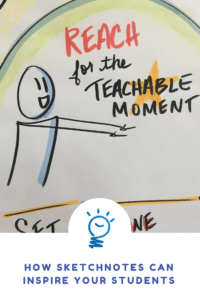
Here are ways that sketchnotes can inspire your students:
- It gives them a fresh way of notetaking. – You may have students that stick behind laptop screens or have notebook pages with scribbles all over. Have them put those materials aside and provide the perfect materials to introduce sketchnotes. Use budget-friendly computer paper and bring out the markers to bring some color into your lessons. *Quick note: When first introducing sketchnotes to your students, make sure the lesson you are covering that day is on the simpler side. You want to set them up for success by providing an “easy to follow” topic to start.
- You can help them show off their creative side. – Using this new way of note-taking, students can show off their creativity. Let them also have fun through their color choices and doodles. This process will help students see another side of their studies.
- Visual learning can increase their retention of information. – Our brains love visuals. Studies show that 90% of the information transmitted to our minds is visual, so utilizing a platform that can help with students understanding of materials is always a plus. Learn more about why our brain loves visuals here!
- Encourage the class to share their creations. – At the end of your lecture, ask each student to stand up and provide a short presentation of what they created. Let them walk you and their classmates through their color choices, the images or icons they drew and what they loved about the processes. It can also inspire for the next time!
Get your supplies ready and have fun with your students through sketchnotes! Need more tips? Download our FREE Visual Note-Taking Tip Sheet.












